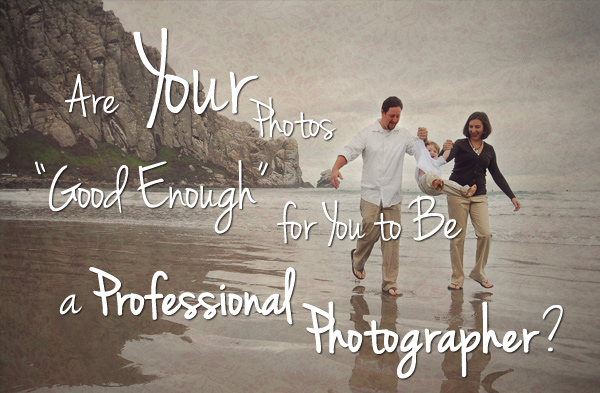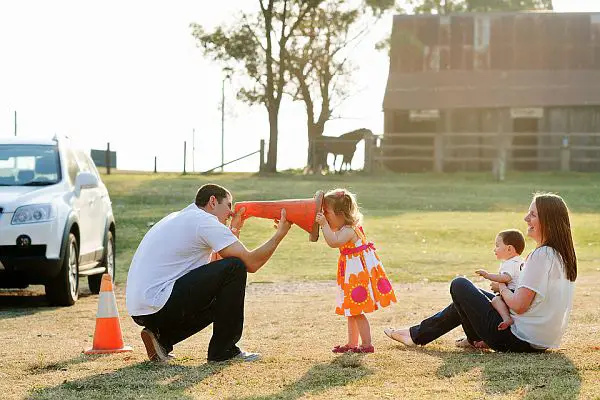There are a lot of photographers out there selling photos, which are well … rubbish.
And there are many people out there who regard photography as an unpaid hobby, and yet produce shots which could be sold.

How do you know if your photography is suitable for the commercial world?
It’s not an easy question to answer, and I don’t claim to have an outright answer for you. I don’t think anyone does.
But I’d like to examine this question deeper and provide you with 3 perspectives, which I hope allow you to develop your photography in the right direction.
1. Quality Is Not The Same As Commerciality.
If you’re aiming to become a professional photographer, it means you’re aiming to create photographs which have commercial value.
The relationship between commerciality and quality is not a simple one. Just because the photo is judged as “good”, “amazing” or “high quality” by people, doesn’t mean it has potential to be sold.
This principle also applies – to an extent – in reverse. There is a lot of photography out there that is being consumed by unwary everyday people, magazine publishers and advertising agencies which doesn’t have much value.

One of the implications here is that, technically speaking, you don’t need to produce good photos to make a living from photography. But of course it’s not something I’d ever advise you to consciously do – firstly, because ripping people off is bad juju and second, because regardless of the money you make your life would be miserable.
I’m making this point for you to notice something: you don’t need to be the BEST photographer for you to be a commercial success. Beyond a certain point, improving your photography skills alone will not help you a lot in transforming your photography into a form of income.
Beyond that very point, to continue towards your aim of being able to monetize your photography skills, you’ll need to invest heavily into developing your business and personal skills.
2. Quality Is Subjective. Style Is Tangible.
I might like a photo you took. You might hate it. A potential customer of yours might have mixed feelings about it.
Who has the right measure of this photo’s quality? And, most importantly, how much is this photo worth?
Look, technically speaking, there are some tangible markers of a photograph’s value. A photo that is well exposed, that has good composition, that has good lighting, has a well-executed production element, tells a story, will easily be spotted by professionals as a work of another professional.
But from another perspective none of that matters one bit. Why? Because photography is art. And art is prone to subjective interpretation.
Sure, Da Vinci’s Mona Lisa has been hailed as great, but how “great” is she to you? If you didn’t know that the painting was so famous and expensive, would you hang it in your house?
If you’re a parent, for example, you might prefer to have a photo of your kids hanging in your living room. Which means that a $50 print of your toddler is intrinsically more valuable to you than handiwork of that particular dead genius.
And Da Vinci would be OK with that. Most artists are completely fine with people not liking their work; they know that art which appeals to everyone is mediocre art.
Great artists produce works which appeal to a select crowd. And they stubbornly ignore their critics.

My point is that if you focus on creating quality photographs (whatever that means), you might find yourself getting lost in a sea of people’s opinion.
But if you focus on developing a style – and then experimenting within that style with the aim of refining it – you will have some more solid foundation to stand on.
When I started shooting, I didn’t know much about lighting. I kept incessantly experimenting while getting ideas from instructional DVDs and online tutorials.
After a while I began to noticed that every now I’d take a shot which really suited photos of families and kids. It was almost always a backlit photo, taken from a dramatically low level, with the lens often flaring up and creating a very dreamy, summery feel.
I’m sure I wasn’t the first to take that kind of photo.
But I really liked the look and began to experiment, introducing strobes and reflectors, movement, props and blurred additional foregrounds . It now is one of the key “looks” that defines my style and features very often in my portfolio.
It’s one of the reasons families call to book a photoshoot with me. And – importantly – it’s one of the reasons some families choose not to call.
To sum it up – experiment until you find a look/number of looks you like. Set out to become the expert in that look. Don’t settle for just copying it – aim to improve it, add something to it or remove something. Make it your own. Be an artist about it.
And then keep shooting until the more tangible markers of quality I mentioned before develop to a high standard.
3. Creativity And Consistency Are More Important Than “Quality”.
I’m putting the word “quality” here in inverted commas because we just established that it’s a pretty nonsensical concept.
Consistency, however, is critical. One of the key things that separates an good amateur from a professional is this: the amateur shoots at a wedding, for example, and can grab some good candid shots.
A professional will have a very good idea of which photos (I personally refer to them as concepts because for me they’re loose ideas about stories I want to tell through my photos) he wants to create before he begins to shoot.
And he will be creating more and more shots – in his head – as the day goes on. And as he works, he is simply translating the vision in his mind into tangible photographs.
This ability to “see” a photo in your head based on a creative insight about your subject and then accurately, consistently translate it into images is what separates a pro from an amateur.
In Conclusion: How To Make Your Photos “Good Enough”.
I think one of the best way to practice for the land of commercial photography is to shoot to a brief.
If you’re like most hobbyist photographers, you probably take your camera with you when you go to a market or a new city or a party or a picturesque location and hope to “take some good photos”.
And very often you do.

But try this instead. Give yourself a brief before you head out with your camera. And then you must produce a series of images, which fit that brief.
Here are some brief ideas you can use:
• essence of life in XYZ suburb.
• poverty
• wealth
• technology: connecting or separating people?
• love
• homelessness: how much do we care?
• a tribute to street performers
• a tribute to emergency services
Happy shooting!









well written, steven!